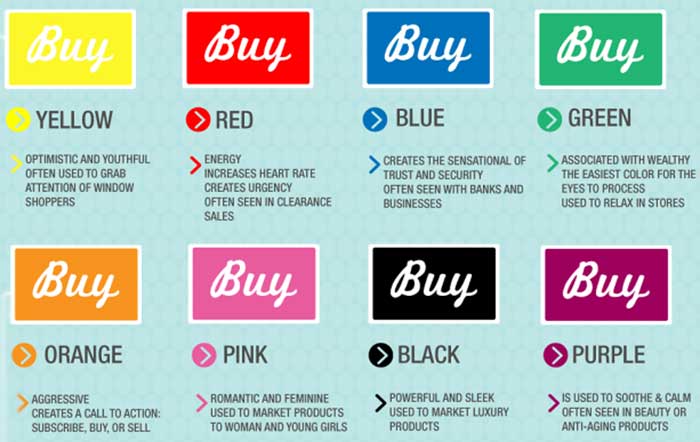You don’t need a conversion rate optimization consultant to improve the conversion on your website. All you need is to read this article – and then take action!
As you may have noticed, there are thousands of articles around the Web dedicated to the same topic: how to increase conversion on your website. You may even have read some of those articles.
They usually follow the same formula – here’s “before” and here’s “after.” To achieve that, you need to [INSERT TYPICAL CONVERSION RATE OPTIMIZATION TIP]. These tips range from “improve your design,” “change button color,” “use action-oriented CTA” to “add more confusing price options and/or testimonials.” And they promise some significant increase in your conversion rate – anything below 20% is just laughable.
However, as it often turns out, not all the tips bring the same results to your website as they did in the described case studies. Which is quite reasonable considering the fact that no two businesses are alike.
Therefore, you will need something more than just copy-paste, monkey-see-monkey-do techniques to increase the conversion on your website and never hire a conversion rate optimization consultant. Something that these consultants and other industry specialists use in their everyday work – their basic principles and guidelines.
And this is exactly what I’m going to give you here in this article – the basic principles of keeping your conversion rate strong, independent of the nature of your business.
Following these principles will allow you to become your own conversion rate optimization consultant, thus saving a hefty sum of money and, of course, a lot of effort.
7 Basic Principles Employed by Any Conversion Rate Optimization Consultant

I’ll list these principles to give you an idea of what’s to follow, and then we will go into detail with each one of them.
- Set your goals right
- Leave the basics. Leave out all the rest
- Always take a fresh look
- Enable “user mode” as often as possible
- Never go all in – test your ideas small-scale
- Experiment with everything
- Great results never come easy
Starting off with the obvious…
1. Set Your Goals Right
Yes, I do realize it is obvious but, still, so many people can’t seem to set their goals just right. Before engaging in any kind of heavy conversion optimization action, set yourself a clear goal using the following pattern.
If I do [PROPOSED ACTION], the [DESIRED RESULT] will happen because [EXPLAIN CAUSAL RELATIONSHIP BETWEEN THE ACTION AND THE RESULT].
This pattern (also called “the hypothesis”) may seem quite easy to fill in but it’s not, I’m telling you. Give it a try.
For example, you want to change your call-to-action button color from green to red and get a 25% increase in the conversion rate, because you read about it in some article. So…
If I change the CTA button color from green to red, the conversion rate will increase by 25% because… what? Because you read about it in an article? But that’s just plain bull*hit.
You need something more serious, than that. And that’s when your brains start to operate to the maximum trying to figure out why exactly it is going to work. Instead of mindless copypasting, you’ll start getting to the bottom of the issue, asking yourself questions like:
- Why in the world should the red color increase my conversion?
- What is the correlation between a color and a user’s reaction to it?
- Do some colors bear some special traits?
You will probably come up with something like this.

See? That’s much better than what you’ve had a few moments ago. Now you get the full picture in front of you and can make a better decision. Perhaps, a red color is not what you need because you sell women’s lingerie. In this case, fuchsia will suit you much better.
Of course, it’s just an example but it does illustrate the importance of setting your goals right. Plus, this hypothesis-based method can easily help you distinguish between a great idea and a flop. A potential flop will never pass this hypothesis test.
2. Leave the Basics. Leave Out All the Rest
Alright, now that you’ve set your goal straight, it’s time to concentrate on it. How often do we make useless, fruitless actions just for the sake of such? If it’s our everyday life, it happens quite often and really it’s OK to indulge yourself in some mindless non-productive activity once in a while.
However, if we’re talking business, it’s mostly unacceptable. The ability to concentrate on the goal you’re about to achieve is a virtue. It changes the way you think and act.
For example, you want to get more customers. To achieve that, first, you need to increase registrations. Your team suggests that you redesign the landing page.
What are the actions that may directly lead to achieving the goal? Probably, they are:
- simplifying the registration process (deleting unnecessary fields, steps etc.)
- explaining the benefits of signing up (e.g. “sign up to get a free sample”)
Will redesigning the landing page help? Well, it may, to some extent, but it’s not the easiest and cheapest way. And it’s certainly way too far from your main goal. Stick to the basics.
3. Always Take a Fresh Look
Everyone who’s inside some process is biased meaning they can’t think and act objectively. It’s the law of nature – we tend to cherish more the things we’ve invested ourselves into.

No matter how ugly your (well, okay, not your – someone else’s 😉 ) website design now, you’ll always feel reluctant to change it even though you realize it’s just about time. Answer? Because it’s YOUR design – you’ve invested your time and energy into it, and you love it unconditionally.
It’s a great quality for relationships but certainly not for business. Keep reminding yourself to maintain objectivity in whatever you do. What if I saw this website for the first time, not knowing anything about it? Would I create an account on it? Would I buy something from it?
Being able to step out of yourself, the process you’re in, and take a look at the situation from the outside is a great gift.
4. Enable “User Mode” as Often as Possible
This is a logical continuation of the previous technique – but this time, you will have to assume the role of a user. You, as a creator of your website, know all ins and outs. The menu items placement seems quite logical to you and the checkout process is more than fine.
Yet, your website isn’t making thousands of dollars. What’s wrong?
If you want to understand your clients better, you need to behave like them. Write down the typical user flow on your website and everything that precedes it (Google search, click on the PPC ad etc) and walk yourself through it. Trust me – you’ll have a lot of great insights.
If you want to know more about getting into your user’s shoes, check this article out – “How to Create Buyer Persona for Your Business and Get More Clients.”
5. Never Go All in – Test Your Ideas Small-scale
None of us is a billionaire but we all want to become one. There’s one trait that all wealthy people have in common – they spend their money wisely. Saving often means earning.
That’s why I strongly advise you against implementing every great idea that comes to your mind. You can have as many great ideas as you want but do me a favor – test each one of them before you go all in. If you give it a thought, there can be smart and cheap ways of testing your ideas.
For example, you want to add a live chat to your website. The technology has to be purchased from a third party, installed and rolled out. Also, there’s additional staff involved. And, still, there is no guarantee that your clients will even use it.
Solution? Add a fake “Open Live Chat” button to your main page and see how many people will click on it to see if it’s even feasible. Yes, some of your customers may be confused by the lack of the promised functionality – tell them the live chat is currently in development and it’s coming soon.
Unethical? Hardly. You will get the real data and that’s what’s important. By the way, the tactic I’ve described here is called “fake-door testing.”

6. Experiment with Everything
No matter how crazy your idea is, give it a try by testing it out. A/B testing (or split testing) is there to help you in this venture. Likewise, no matter how essential some things on your website may seem, nothing is set in stone. They can, may, and need to be changed.
In short, question everything. In the ever-changing world we live in this is the only successful survival tactic. Hey, even Google says we should do experiments!
7. Great Results Never Come Easy
Never have, never will. Again, this just a law of nature – you only get as much as you put into it.
If you expect some outrageous results just by changing your button color, brace yourself for a lot of difficulties. Even if you do get quick results once, it’s not going to stay long.
The reality is that every long path consists of many small steps and milestones, each almost insignificant on it own, but as a whole, they are very important.
Not that I’m scaring you – just preparing for some serious work. You’re up to it, aren’t you?
Conclusion
At the end of the day, these 7 principles are nothing but common sense. Try observing them in your everyday practice and may the high conversion be with you!
The right thing to do would be share this article with your friends on the social networks – just click on one of the icons of social media, it’s that easy.
If you have further questions on the subject, please write them in comments – I’ll be glad to answer.
Here’s my another articles that might interest you:





Comments0